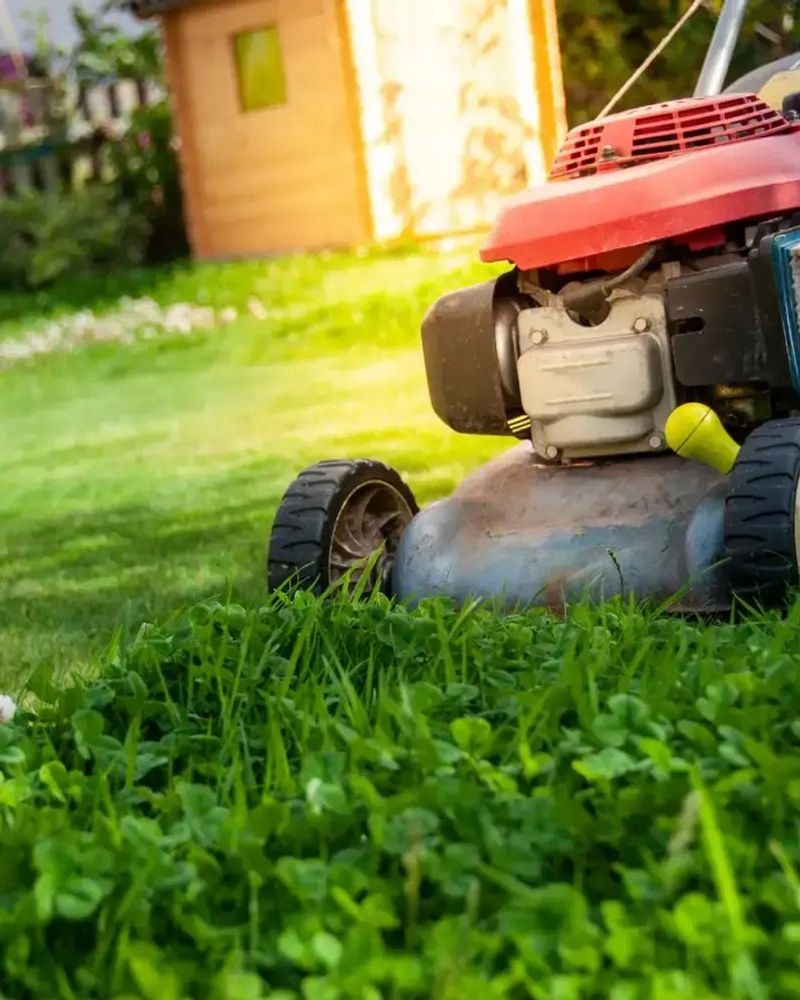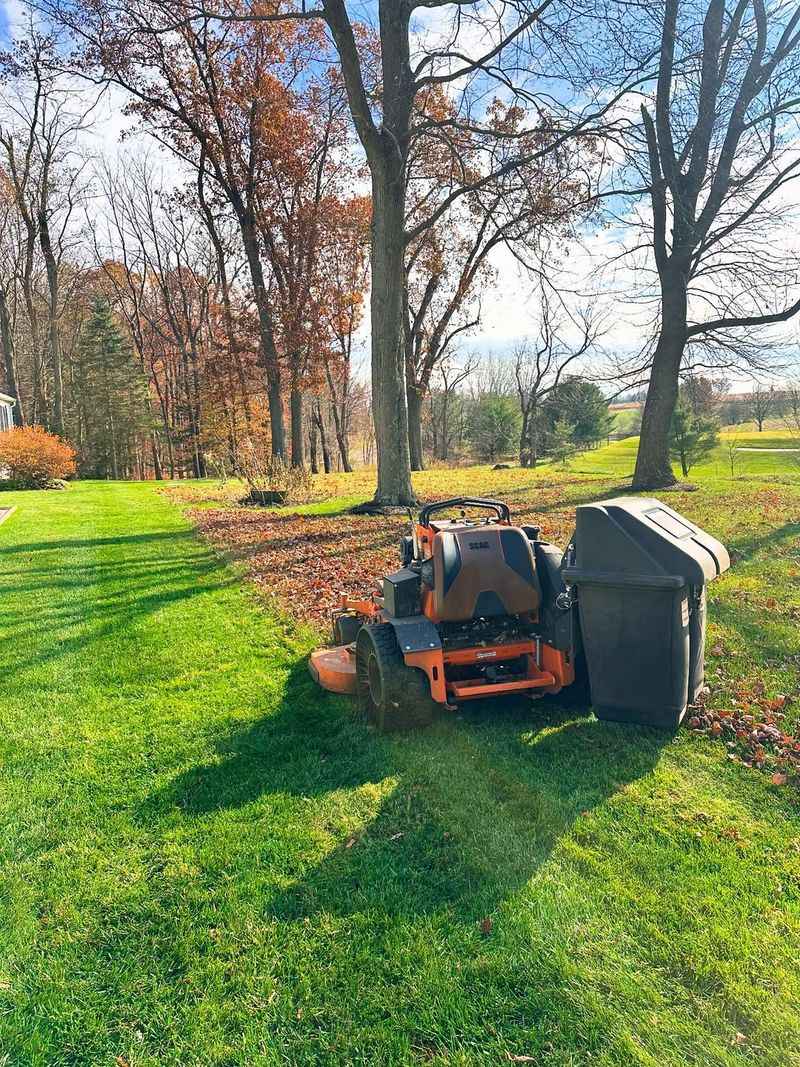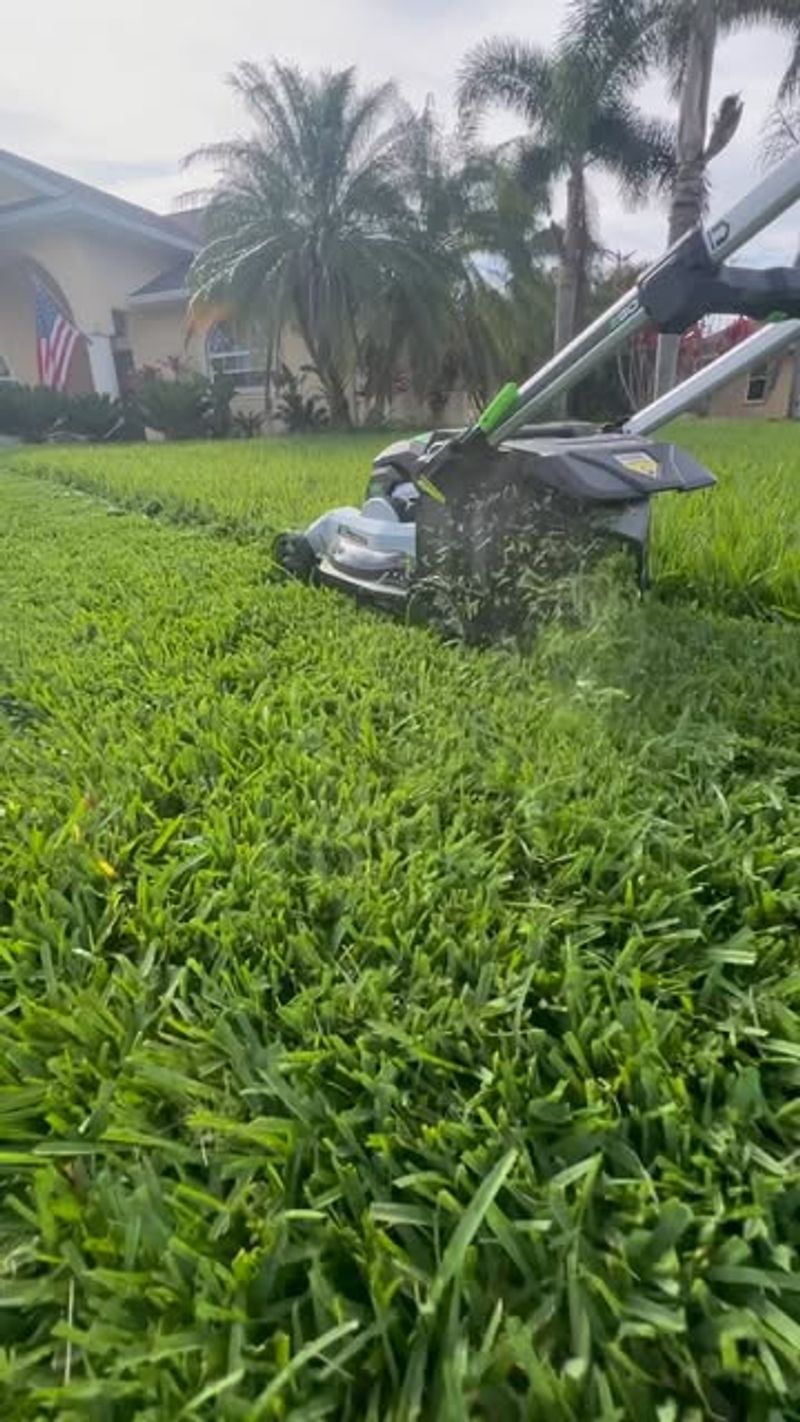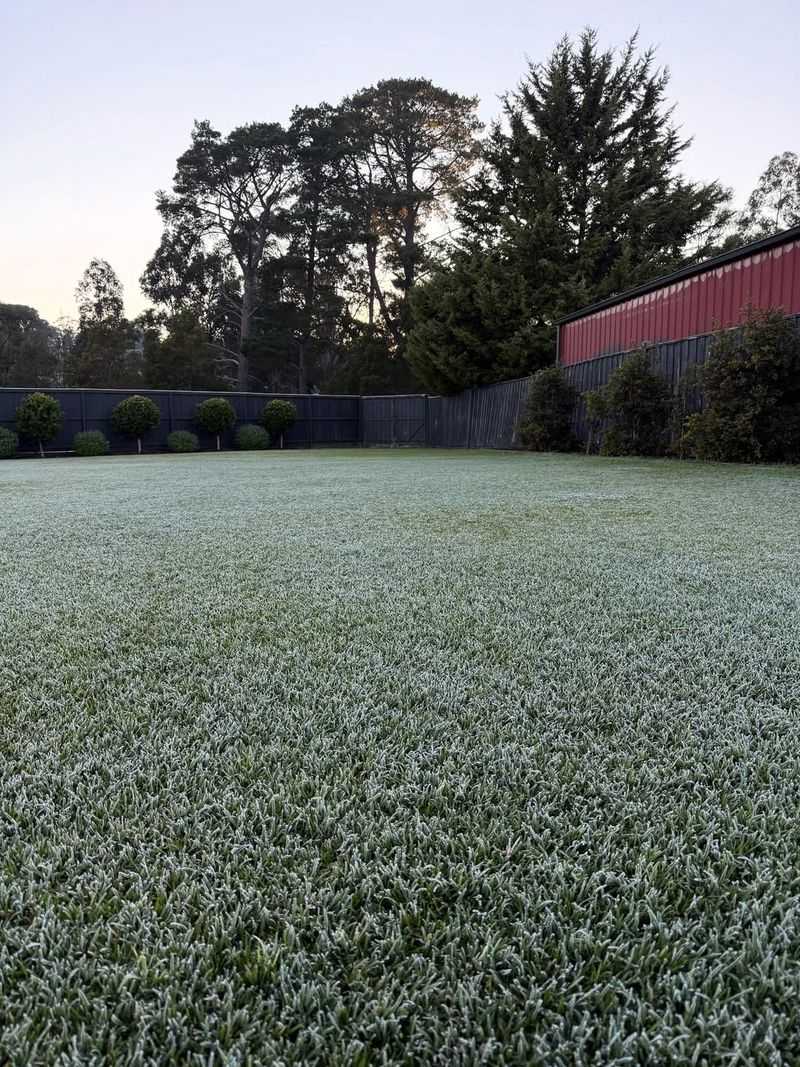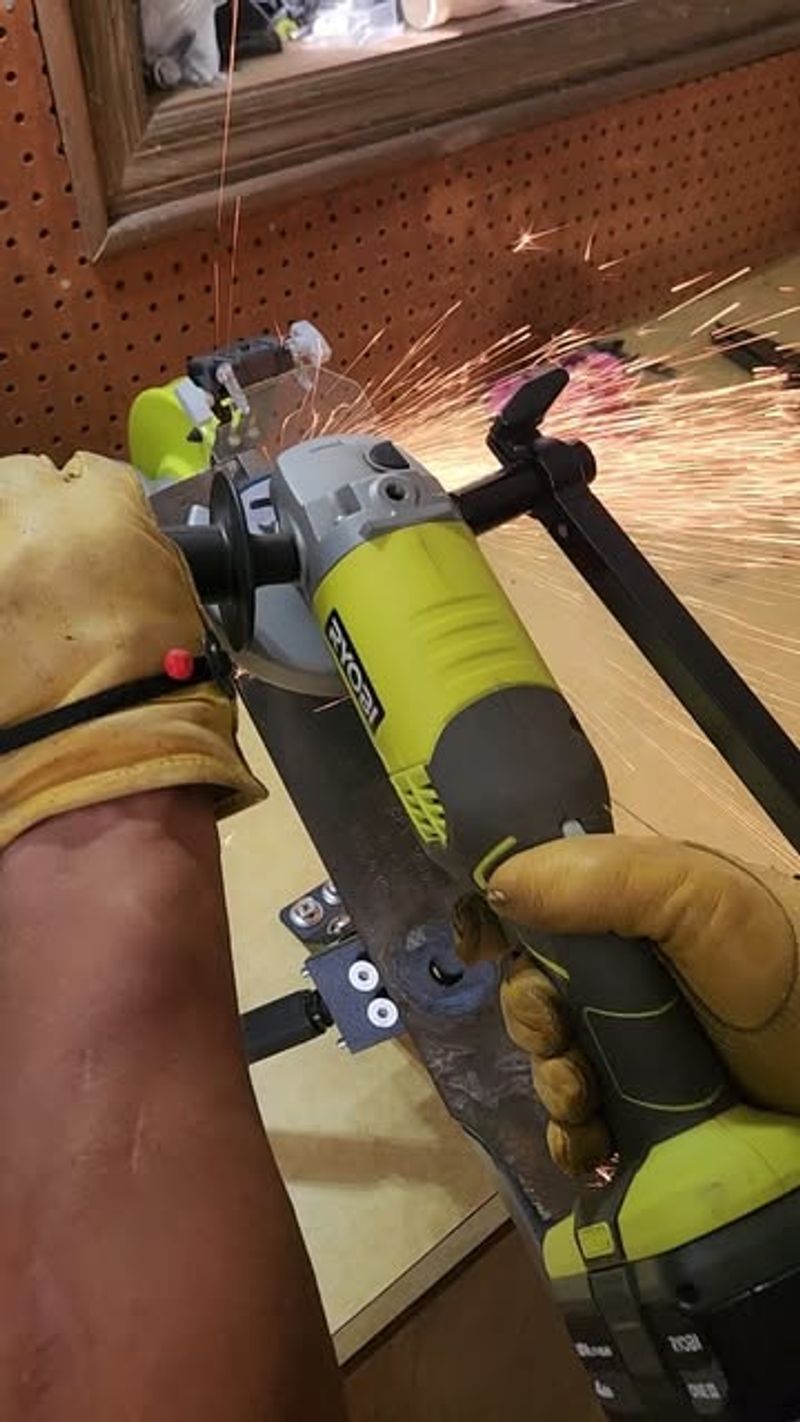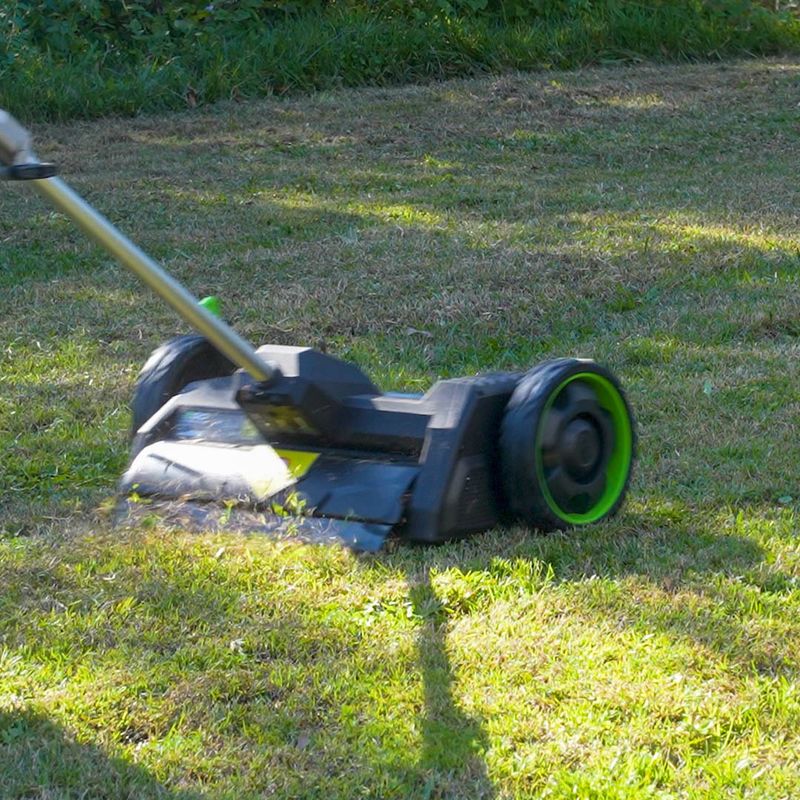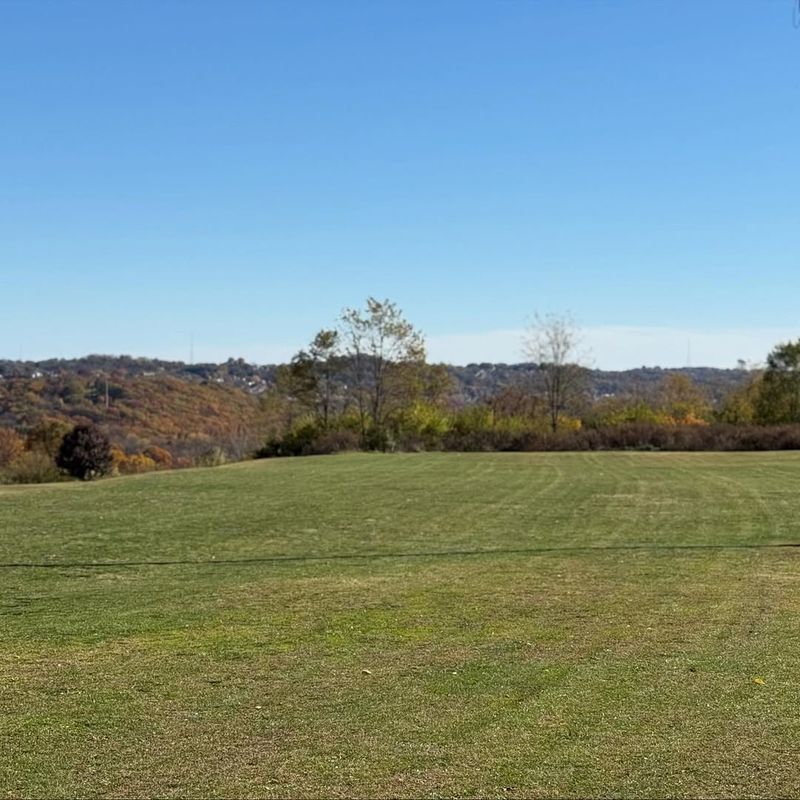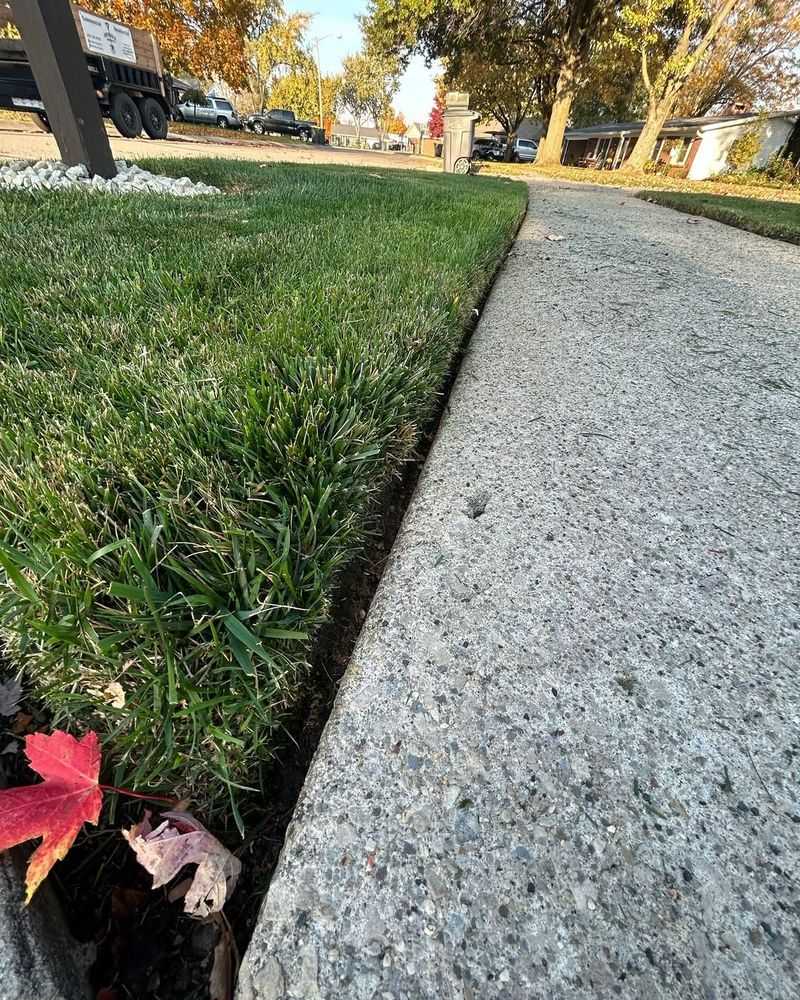November in Massachusetts means cooler temps and a shift in how you care for your lawn. Even as winter creeps in, your grass still needs a little attention. The rules for mowing change once summer ends—shorter days and colder nights call for a gentler approach.
A well-timed final trim can make all the difference. I’ve seen lawns stay healthier through winter just by following a few smart fall tips. Come spring, that extra care pays off with lush, easy-to-manage growth.
1. Lower Your Mower Blade Height Gradually
Adjusting your mower blade to a shorter setting helps prevent snow mold and fungal diseases during winter. Massachusetts lawns benefit from a final cut at about 2 to 2.5 inches, which is lower than summer heights.
Make this change slowly over several mowings rather than cutting too much at once. Shocking your grass with a drastic height change can stress the roots and leave brown patches.
Gradual lowering gives your lawn time to adapt while still protecting it from harsh winter conditions ahead.
2. Keep Mowing Until Growth Stops Completely
Your grass keeps growing well into November in Massachusetts, especially during milder years. Watch your lawn closely rather than assuming a specific calendar date marks the end of mowing season.
Cool-season grasses like Kentucky bluegrass and fescue remain active until temperatures consistently drop below 40 degrees. Some years you might mow into early December if weather stays warm.
Letting grass grow too tall invites pests and disease, so stay ready with your mower until growth truly stops for winter.
3. Remove Leaves Before Each Mowing Session
Fallen leaves create a thick blanket that blocks sunlight and traps moisture against your grass. Before firing up your mower, rake or blow leaves into piles for removal or composting.
Mowing over heavy leaf coverage just chops them into smaller pieces that still smother your lawn. Light leaf scatter is fine to mulch, but thick layers need clearing first.
Taking this extra step ensures your grass gets the air circulation and light it needs before winter dormancy sets in for good.
4. Check Local Noise Ordinances For Weekend Mowing
Many Massachusetts towns have specific rules about when you can operate loud equipment like lawn mowers. November weekends often see neighbors sleeping in or enjoying quiet mornings, making noise restrictions more important.
Most communities prohibit mowing before 8 or 9 AM on weekends and holidays. Some towns also have evening cutoff times around 6 or 7 PM.
A quick call to your town hall or check of the municipal website prevents complaints and keeps neighborly relations friendly throughout the season.
5. Mulch Grass Clippings Instead Of Bagging Them
November clippings break down quickly in cooler temperatures and return valuable nutrients to your soil. Mulching mowers chop grass into tiny pieces that decompose faster than you might expect.
Bagging removes nitrogen and other essential elements your lawn will need come spring. Leaving clippings saves time, reduces waste, and feeds your grass naturally throughout winter.
Just make sure clippings are dry and not too thick, as wet, heavy piles can mat down and create bare spots underneath over time.
6. Avoid Mowing Wet Or Frosty Grass
November mornings in Massachusetts often bring frost or heavy dew that makes grass slippery and difficult to cut cleanly. Mowing wet grass tears the blades rather than cutting them, leaving ragged edges that turn brown.
Frost damages grass cells, and running a mower over frozen blades causes even more harm. Wait until midday when temperatures rise and moisture evaporates before starting your mower.
Patient timing protects your lawn from unnecessary stress and gives you a cleaner, healthier cut every single time you mow.
7. Sharpen Mower Blades For Clean Cuts
Dull blades tear grass instead of slicing it cleanly, which weakens your lawn heading into winter. After a full season of mowing, your blade edges have likely dulled significantly by November.
Sharp blades make cleaner cuts that heal faster and resist disease better during cold, damp conditions. Taking your blade to a hardware store for professional sharpening costs just a few dollars.
Alternatively, learn to sharpen it yourself with a file or grinder, which saves money and gives you a useful skill for years ahead.
8. Watch For Hidden Obstacles Under Leaves
Sticks, rocks, toys, and other debris hide easily under November leaf piles on your Massachusetts lawn. Running over these objects damages your mower blade and can send dangerous projectiles flying.
Walk your yard before mowing to spot and remove anything that could cause problems. Pay special attention near trees, play areas, and garden borders where items accumulate.
A quick inspection takes only a few minutes but prevents costly repairs and potential injuries, making it time very well spent before starting.
9. Maintain Consistent Mowing Patterns
Changing your mowing direction each time prevents grass from leaning permanently in one direction and developing ruts. November is a perfect time to establish this healthy habit for next season.
Alternating between horizontal, vertical, and diagonal patterns distributes wear evenly across your lawn. Grass blades stand up straighter, giving your yard a fuller, more attractive appearance.
Ruts created by repeated patterns hold water and create muddy spots that damage grass roots, so mixing up your approach protects your investment year-round.
10. Service Your Mower Before Winter Storage
Your final November mowing marks a good time to prepare your equipment for months of storage ahead. Old fuel left in the tank over winter gums up the carburetor and makes spring startup difficult.
Drain the gas, change the oil, clean the deck thoroughly, and replace the air filter if needed. Taking care of these tasks now means your mower starts easily next March.
Proper maintenance extends your equipment’s lifespan by years and saves you from frustrating repair bills when mowing season returns to Massachusetts again.
11. Respect Daylight Saving Time Changes
Early November brings the end of daylight saving time, which means darkness arrives much earlier than you expect. Plan your mowing schedule around the new sunset time to finish safely.
Mowing in dim light makes it hard to see obstacles and creates uneven cutting results. Most Massachusetts homeowners need to start their final mowings by mid-afternoon to complete the job properly.
Adjust your weekend schedule accordingly, and consider morning mowing if afternoons get too dark too quickly for safe, effective lawn care during this transitional period.
12. Edge Walkways And Driveways One Final Time
Neat edges give your property a polished, well-maintained appearance throughout winter when you are not actively working on your lawn. November is your last chance to trim grass growing over sidewalks and driveways.
Clean edges also prevent grass from creeping into areas where it does not belong during the dormant season. Use a manual edger or string trimmer to create crisp, professional-looking borders.
Taking pride in these finishing touches shows neighbors you care about your property and sets a high standard for your entire street heading into colder months.



